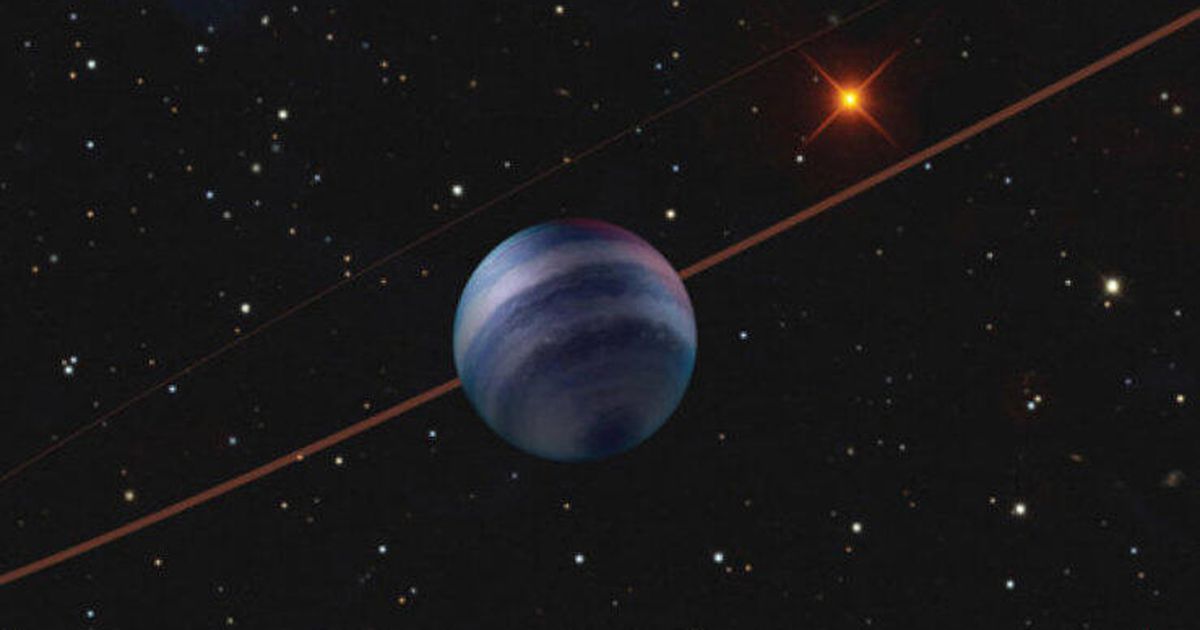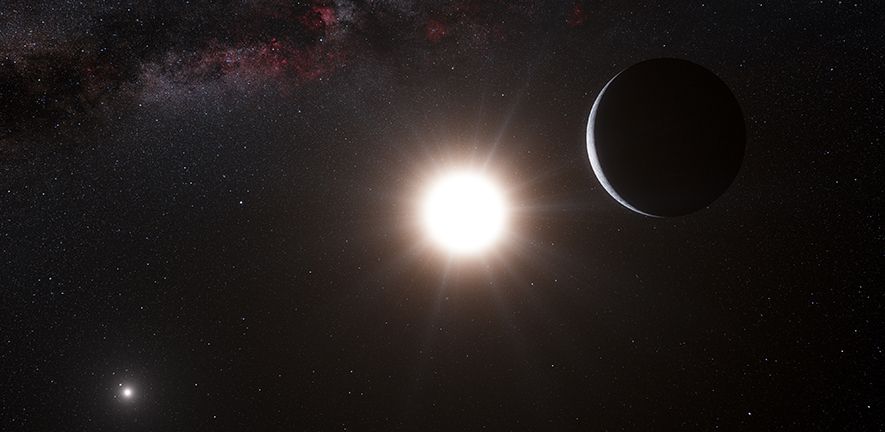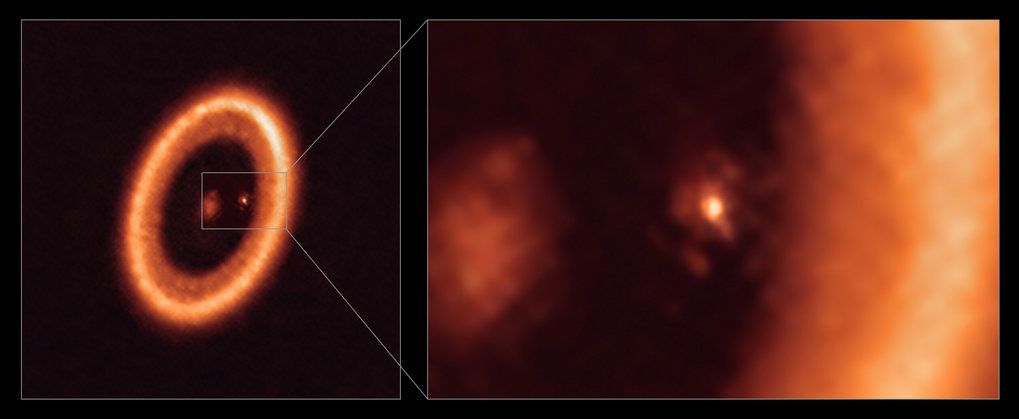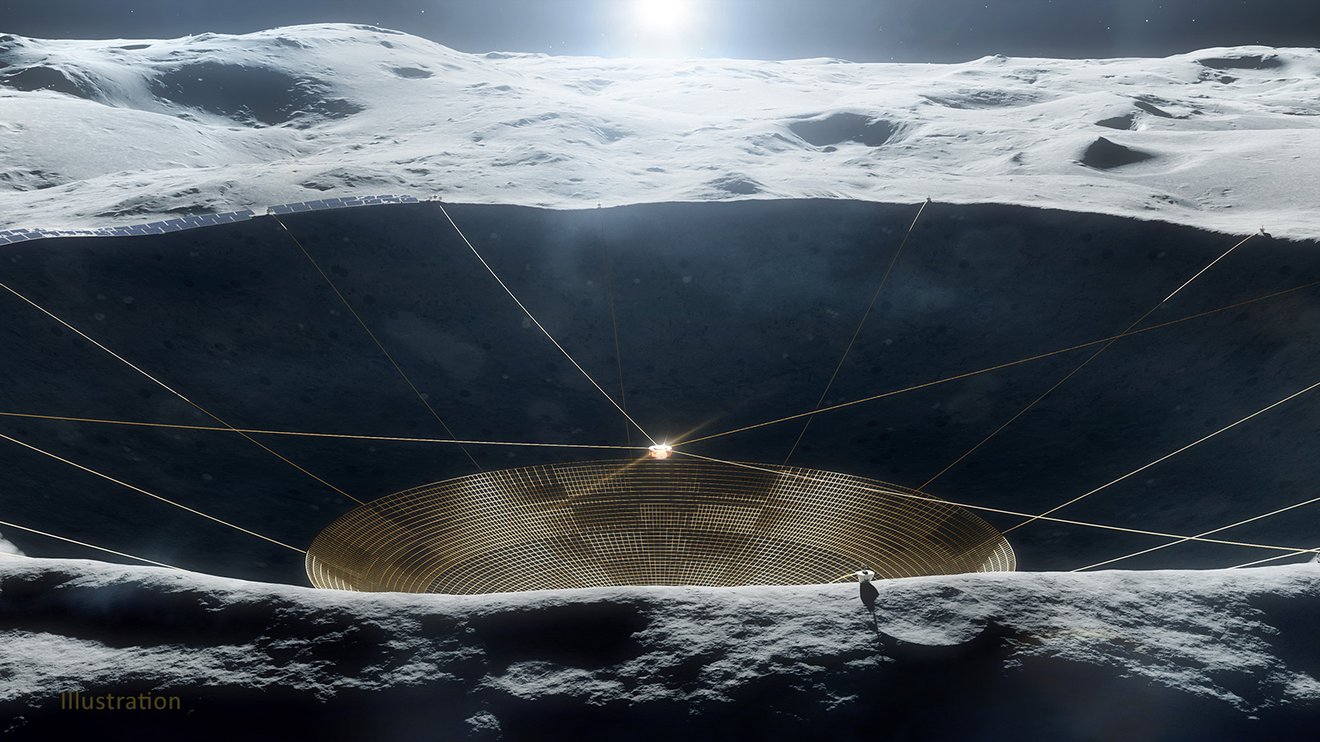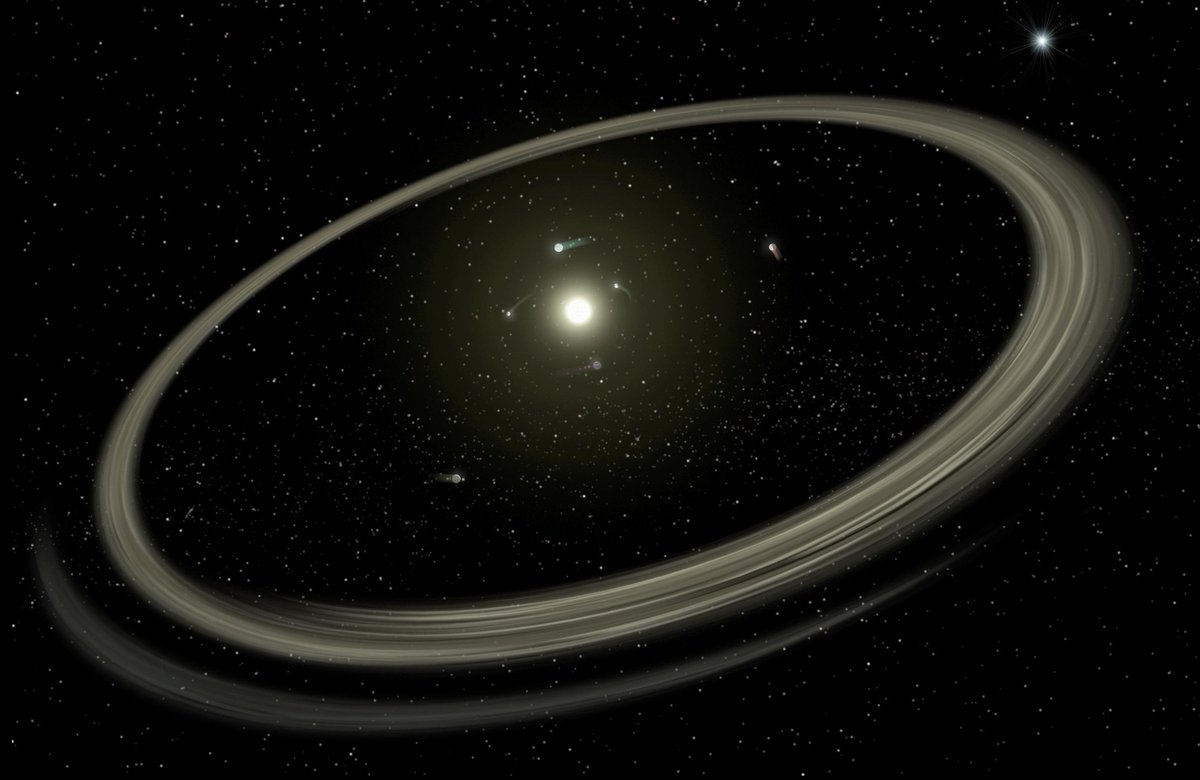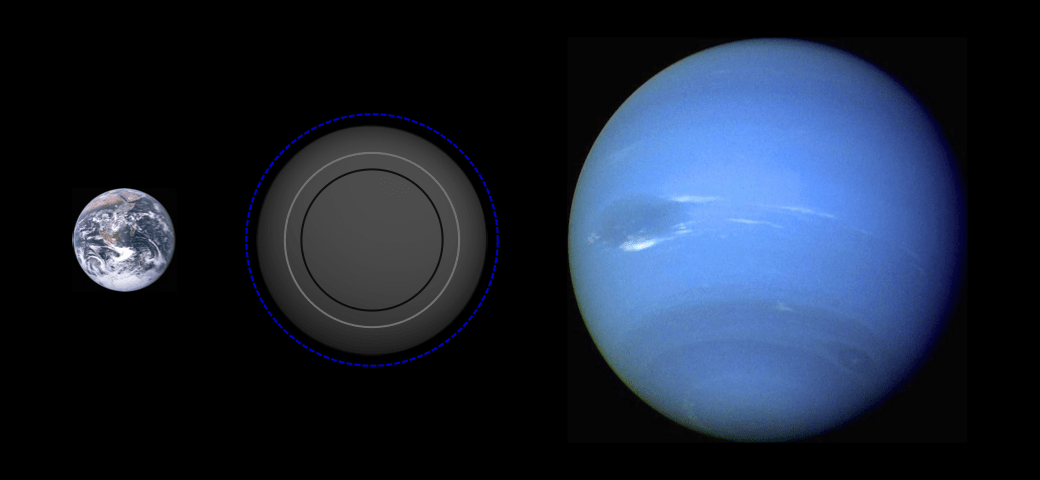Tracking exoplanets is hard – especially when that exoplanet is so far away from its parent star that the normally used “transit” method of watching it dim the light of the star itself is ineffectual. But it really helps if the planet is huge, and has its own infrared glow, no matter how far away from its star it might be. At least those properties allowed a team of scientists from the University of Hawai’i to track a particular exoplanet called (and we’re not kidding) Coconuts-2b.
Continue reading “Astronomers Find a Huge Planet Orbiting its Star at 6,000 Times the Earth-Sun Distance”This is how you get Tatooines. Binary Star Planet Formation
One of the less appreciated aspects of George Lucas’ vision for Star Wars was that he predicted the existence of planets in binary star systems years before we saw even the first exoplanet. Now a team from the University of Cambridge and the Max Planck Institute for Extra-terrestrial Physics have found how exactly those planets can form without being torn apart by their accompanying suns.
Continue reading “This is how you get Tatooines. Binary Star Planet Formation”Incredible! Astronomers see a Moon-Forming Disk Around a Newly Forming Planet
Planetary formation is a complicated, multilayered process. Even with the influx of data on exoplanets, there are still only two known planets that are not yet fully formed. Known as PDS 70b and PDS 70c, the two planets, which were originally found by the Very Large Telescope, are some of the best objects we have to flesh out our planetary formation models. And now, one of them has been confirmed to have a moon-forming disk around it.
Continue reading “Incredible! Astronomers see a Moon-Forming Disk Around a Newly Forming Planet”There are Probably Many More Earth-Sized Worlds Than Previously Believed
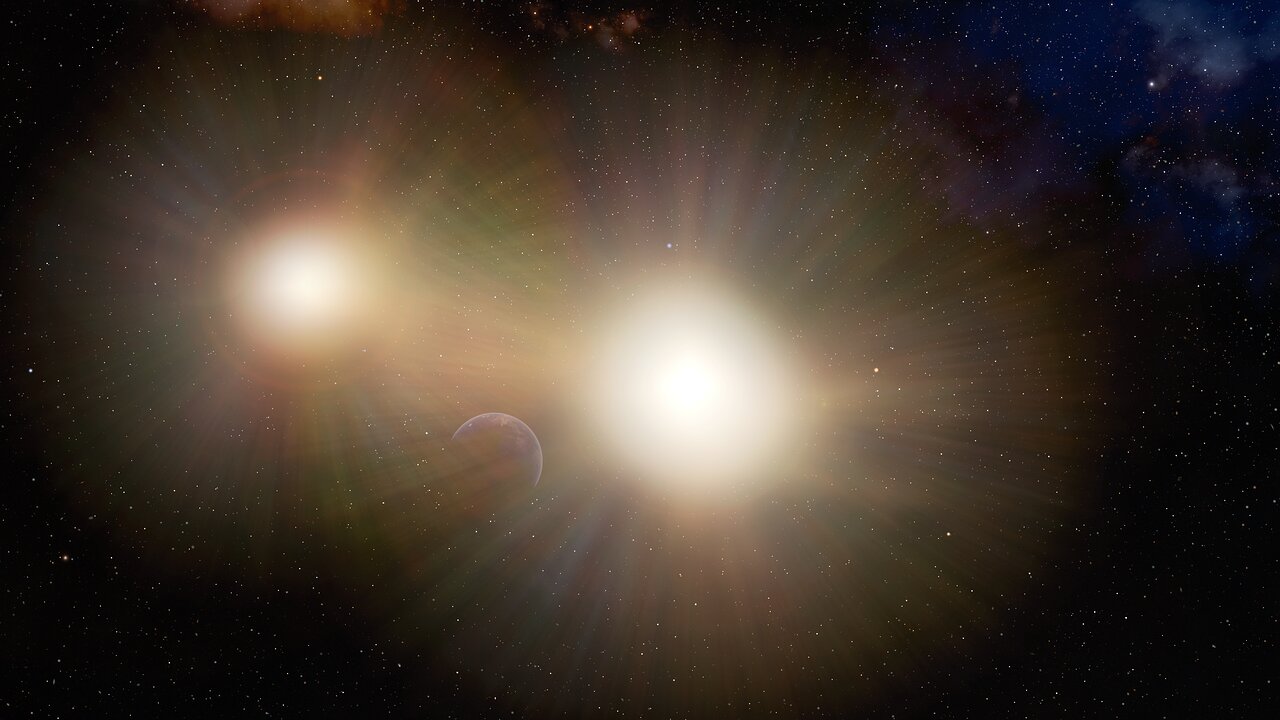
In the past decade, the discovery of extrasolar planets has accelerated immensely. To date, 4,424 exoplanets have been confirmed in 3,280 star systems, with another 7,453 awaiting confirmation. So far, most of these planets have been gas giants, with about 66% being similar to Jupiter or Neptune, while another 30% have been giant rocky planets (aka. “Super-Earths). Only a small fraction of confirmed exoplanets (less than 4%) have been similar in size to Earth.
However, according to new research by astronomers working at NASA Ames Research Center, it is possible that Earth-sized exoplanets are more common than previously thought. As they indicated in a recent study, there could be twice as many rocky exoplanets in binary systems that are obscured by the glare of their parent stars. These findings could have drastic implications in the search for potentially habitable worlds since roughly half of all stars are binary systems.
Continue reading “There are Probably Many More Earth-Sized Worlds Than Previously Believed”To Take the Best Direct Images of Exoplanets With Space Telescopes, we’re Going to Want Starshades
Between 2021 and 2024, the James Webb (JWST) and Nancy Grace Roman (RST) space telescopes will be launched to space. As the successors to multiple observatories (like Hubble, Kepler, Spitzer, and others), these missions will carry out some of the most ambitious astronomical surveys ever mounted. This will range from the discovery and characterization of extrasolar planets to investigating the mysteries of Dark Matter and Dark Energy.
In addition to advanced imaging capabilities and high sensitivity, both instruments also carry coronagraphs – instruments that suppress obscuring starlight so exoplanets can be detected and observed directly. According to a selection of papers recently published by the Journal of Astronomical Telescopes, Instruments, and Systems (JATIS), we’re going to need more of these instruments if we truly want to really study exoplanets in detail.
Continue reading “To Take the Best Direct Images of Exoplanets With Space Telescopes, we’re Going to Want Starshades”A Lunar Farside Telescope Could Detect Exoplanets Through Their Magnetospheres
It’s difficult to do radio astronomy on Earth, and it’s getting harder every day. Our everyday reliance on radio technology means that radio interference is a constant challenge, even in remote areas. And for some wavelengths even the Earth’s atmosphere is a problem, absorbing or scattering radio light so that Earth-based telescopes can’t observe these wavelengths well. To overcome these challenges, astronomers have proposed putting a radio telescope on the far side of the Moon.
Continue reading “A Lunar Farside Telescope Could Detect Exoplanets Through Their Magnetospheres”A New Technique for “Seeing” Exoplanet Surfaces Based on the Content of their Atmospheres
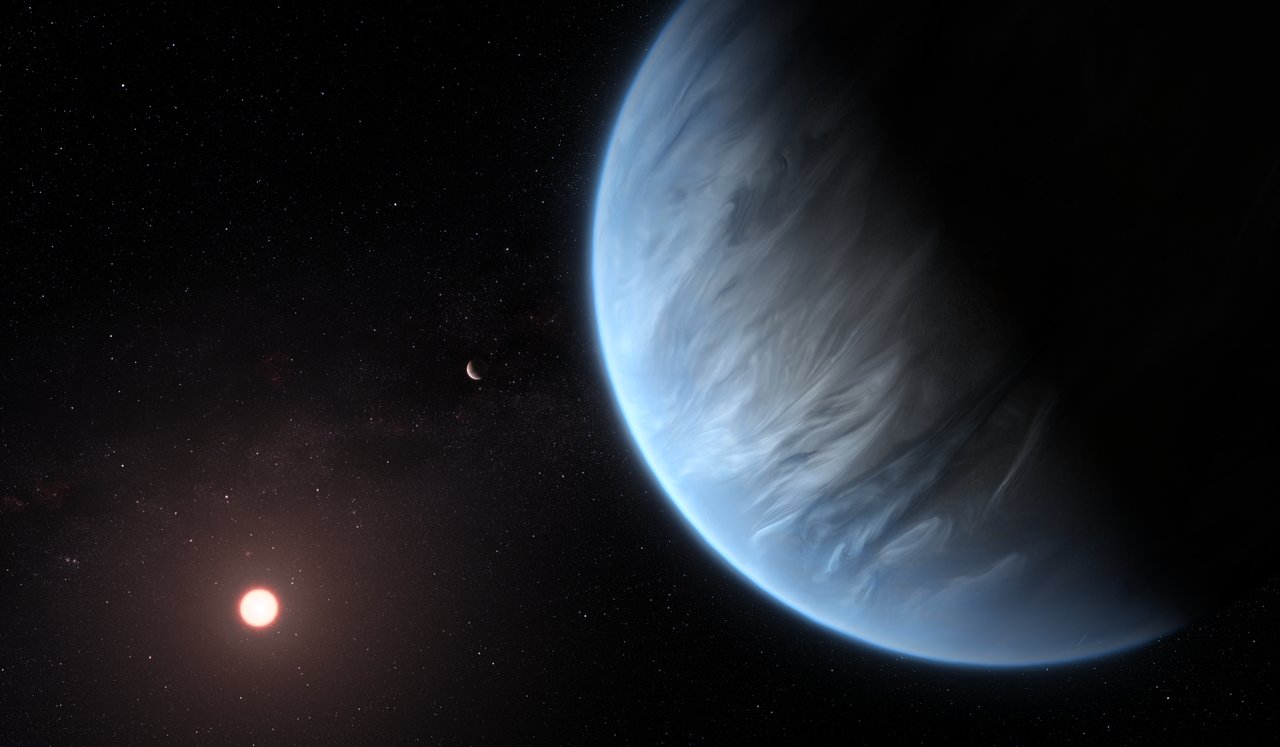
In November of 2021, the James Webb Space Telescope (JWST) will make its long-awaited journey to space. This next-generation observatory will observe the cosmos using its advanced infrared suite and reveal many never-before-seen things. By 2024, it will be joined the Nancy Grace Roman Space Telescope (RST), the successor to the Hubble mission that will have 100 times Hubble’s field of view and faster observing time.
These instruments will make huge contributions to many fields of research, not the least of which is the discovery and characterization of extrasolar planets. But even with their advanced optics and capabilities, these missions will not be able to examine the surfaces of exoplanets in any detail. However, a team of the UC Santa Cruz (UCSC) and the Space Science Institute (SSI) have developed the next best thing: a tool for detecting an exoplanet surface without directly seeing it.
Continue reading “A New Technique for “Seeing” Exoplanet Surfaces Based on the Content of their Atmospheres”What’s the Connection Between the Chemistry of a Star and the Formation of its Planets?
Scientists seem to have come up with a new parlor game – how many ways can we potentially detect exoplanets? The two most common methods, the transit method and the Doppler method, each have their own problems. Alternative methods are starting to sprout up, and a new one was recently proposed by Jacob Nibauer, an undergraduate student in the University of Pennsylvania’s Department of Physics and Astronomy. His suggestion: look at a star’s chemical composition. And his findings after analyzing data on some 1,500 stars hold some surprises.
Continue reading “What’s the Connection Between the Chemistry of a Star and the Formation of its Planets?”The Elements for Life Depend on Both how and Where a Planet Forms
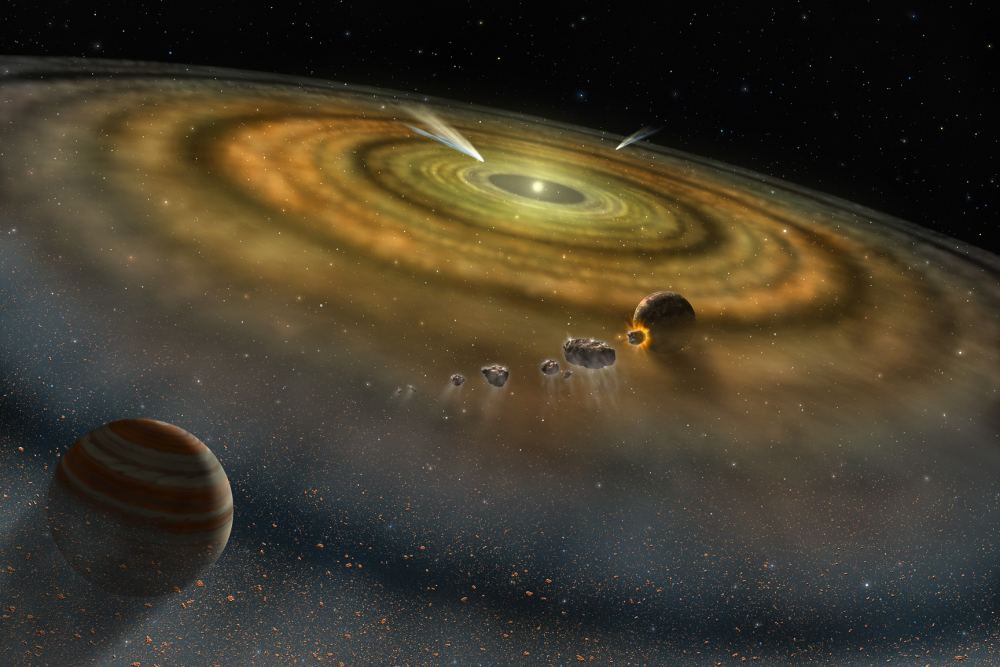
In the past few decades, the number of planets discovered beyond our Solar System has grown into the thousands. At present, 4,389 exoplanets have been confirmed in 3,260 systems, with another 5,941 candidates awaiting confirmation. Thanks to numerous follow-up observations and studies, scientists have learned a great deal about the types of planets that exist in our Universe, how planets form, and how they evolve.
A key consideration in all of this is how planets become (and remain) habitable over time. In general, astrobiologists have operated under the assumption that habitability comes down to where a planet orbits within a system – within its parent star’s habitable zone (HZ). However, new research by a team from Rice University, indicates that where a planet forms in its respective star system could be just as important.
Continue reading “The Elements for Life Depend on Both how and Where a Planet Forms”Larger Rocky Planets Might be Rare Because They Shrunk
Researchers at the Flatiron Institute’s Center for Computational Astrophysics published a paper last week that just might explain a mysterious gap in planet sizes beyond our solar system. Planets between 1.5 and 2 times Earth’s radius are strikingly rare. This new research suggests that the reason might be because planets slightly larger than this, called mini-Neptunes, lose their atmospheres over time, shrinking to become ‘super-Earths’ only slightly larger than our home planet. These changing planets only briefly have a radius the right size to fill the gap, quickly shrinking beyond it. The implication for planetary science is exciting, as it affirms that planets are not static objects, but evolving and dynamic worlds.
Continue reading “Larger Rocky Planets Might be Rare Because They Shrunk”
